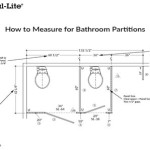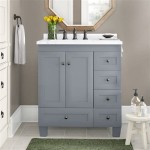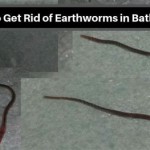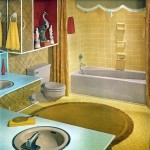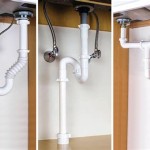What Are The Tiny Little Bugs In My Bathroom?
Discovering tiny bugs in your bathroom can be a disconcerting experience. These tiny creatures, often barely visible to the naked eye, can quickly multiply and become a source of concern. Understanding the types of bugs commonly found in bathrooms and their causes is crucial in effectively addressing the problem. This article will explore some of the most prevalent bathroom bugs, their characteristics, and ways to prevent their infestation.
Common Bathroom Bugs
Several types of bugs can thrive in the humid and damp environment of a bathroom. Some of the most common include:
1. Springtails
Springtails are tiny, wingless insects that are often mistaken for fleas. They measure about 1/16 of an inch long and have a distinctive "springtail" that allows them to leap considerable distances. Springtails are typically found in damp, dark places, such as under sinks, in shower stalls, and around leaky pipes. They feed on decaying organic matter and are not known to bite or cause harm to humans. However, their presence can indicate a moisture problem in the bathroom.
2. Silverfish
Silverfish are elongated, wingless insects with a silvery-gray color. They are nocturnal and prefer damp, dark environments, such as bathrooms, basements, and kitchens. Silverfish feed on starches, sugars, and cellulose, which can include wallpaper, book bindings, and even clothing. While they are not known to bite or spread diseases, they can damage personal belongings and cause aesthetic issues.
3. Drain Flies
Drain flies are tiny, gnat-like insects with fuzzy wings. They are often found clustered around drains and in the vicinity of standing water. Drain flies breed in drains that are clogged with organic debris and can quickly multiply if not addressed. They are not known to spread diseases but can be annoying and indicate poor sanitation practices.
4. Booklice
Booklice are tiny, wingless insects that resemble small, white dots. They are attracted to humid environments and feed on mold and mildew. Booklice are frequently found in bathrooms, kitchens, and other areas with high moisture levels. While they are not known to bite or cause harm to humans, their presence can indicate a potential moisture problem.
Causes of Bathroom Bugs
The presence of bugs in your bathroom is often an indication of certain underlying conditions. Understanding the causes can help you implement preventative measures and eliminate the problem.
1. Moisture
Bathrooms are inherently humid environments due to showers, baths, and other water-related activities. Excess moisture can create ideal breeding grounds for bugs, especially those attracted to damp and decaying organic matter. Leaky pipes, poorly ventilated areas, and condensation buildup can contribute to excessive moisture levels.
2. Organic Debris
Organic debris, such as hair, skin cells, mold, and mildew, provides a food source for many types of bathroom bugs. Clogged drains, dirty floors, and neglected shower stalls can create ideal breeding grounds for these creatures.
3. Access Points
Bugs can easily enter your bathroom through cracks and crevices, gaps around pipes, and unsealed windows or doors. These access points allow them to move freely in and out of the bathroom, making it difficult to control their infestation.
Preventing Bathroom Bugs
By addressing the underlying causes of bathroom bugs, you can effectively prevent future infestations.
1. Control Moisture
Reduce moisture levels by ensuring proper ventilation, fixing leaky pipes, and wiping down surfaces after showering or bathing. Run a fan during and after showering and keep bathroom doors open to allow air circulation. Regularly inspect and clean drains to prevent clogs and standing water.
2. Maintain Cleanliness
Clean your bathroom regularly, paying particular attention to drains, corners, and under the sink. Use a disinfectant cleaner to sanitize surfaces and remove organic debris. Dispose of trash promptly and keep food and other attractants out of the bathroom.
3. Seal Access Points
Seal any cracks or crevices around pipes, windows, and doors to prevent bugs from entering your bathroom. Caulk gaps around sinks and tubs, and use weather stripping to seal drafty areas. Install screens on windows and doors to further deter bugs.
By taking preventative measures and addressing the underlying causes of bathroom bugs, you can significantly reduce the likelihood of experiencing these unwelcome guests in your bathroom. Regular cleaning, proper ventilation, and sealing access points will create a less hospitable environment for bugs, ensuring a cleaner and more comfortable bathroom space.

Bathroom Bugs The Silverfish 6legs2many

Bathroom Bugs Identification Guide How To Get Rid Of Each Type A Z Animals

Silverfish That Little Silver Bug In Your Bathroom Moyer

5 Easy Ways To Get Rid Of Drain Flies Fast

Get Rid Of Springtails In Your Bathroom Charlotte Plumbing

Tiny White Bugs In My Bathroom Orkin

Bathroom Bugs Identification Guide How To Get Rid Of Each Type A Z Animals

Why Do I Have Springtails In The Bathroom Insectek Pest Solutions

How To Get Rid Of Drain Flies Moth And Prevent An Infestation Pest Defence

Silverfish What Is This Bug In My Bathroom Plunkett S Pest Control
Related Posts


